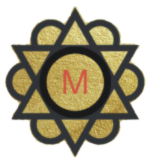
Reversed tarot cards are an intriguing aspect of tarot reading that often elicits curiosity and confusion among both novice and experienced practitioners. In a standard tarot deck, each card can be drawn upright or reversed, with the latter position suggesting a different interpretation than its upright counterpart. The reversal of a card can indicate a variety of meanings, often reflecting internal struggles, blockages, or the need for introspection.
This duality adds depth to the reading, allowing for a more nuanced understanding of the querent’s situation. The concept of reversed cards is rooted in the belief that the energy associated with each card can manifest in multiple ways. When a card appears reversed, it may signify that the energy is being blocked, misdirected, or expressed in a less favorable manner.
For instance, while the upright Fool card represents new beginnings and spontaneity, its reversed position might suggest recklessness or a fear of taking risks. This complexity invites readers to delve deeper into the symbolism and context of each card, fostering a richer dialogue between the reader and the querent.
Key Takeaways
- Reversed tarot cards indicate a different energy or aspect of the upright meaning, often representing internal or blocked energy.
- When interpreting reversed tarot cards in a reading, consider the surrounding cards and the specific question or situation at hand.
- Reversed tarot cards can have a range of meanings, including delays, inner conflict, or a need for introspection.
- The significance of reversed tarot cards lies in their ability to provide a more nuanced and complex understanding of a situation or issue.
- To interpret reversed tarot cards accurately, pay attention to your intuition, consider the context of the reading, and be open to exploring the shadow aspects of the cards.
Interpreting reversed tarot cards in a reading
Interpreting reversed tarot cards requires a keen understanding of both the individual card meanings and the overall context of the reading. When a card appears reversed, it is essential to consider how it interacts with surrounding cards and the specific question posed by the querent. The reversal can serve as a counterpoint to the upright cards, highlighting areas where the querent may be experiencing challenges or where they need to focus their attention.
For example, if the reversed Tower card appears alongside the upright Star card, it may suggest that while there is hope for healing and renewal (as indicated by the Star), there are significant upheavals or disruptions (as indicated by the Tower) that must be addressed first. This interplay between cards can reveal underlying issues that may not be immediately apparent, guiding the querent toward greater self-awareness and clarity. The reader’s intuition plays a crucial role in this process, as they must navigate the intricate web of meanings to provide insightful guidance.
Exploring the different meanings of reversed tarot cards

The meanings of reversed tarot cards can vary widely depending on the specific card in question and its position within a spread. Each card carries its own set of associations, and when reversed, these associations can shift dramatically. For instance, the reversed Empress may indicate issues related to nurturing or creativity, suggesting that the querent may be neglecting their own needs or struggling to express themselves artistically.
Conversely, the upright Empress embodies abundance and fertility, representing growth and nurturing energy. Similarly, the reversed Seven of Swords might point to dishonesty or deception within oneself or in relationships. It could indicate that the querent is avoiding confrontation or failing to take responsibility for their actions.
In contrast, when upright, this card often signifies strategy and cunning, suggesting a more calculated approach to challenges. By examining these shifts in meaning, readers can uncover layers of insight that may help the querent navigate their circumstances more effectively.
The significance of reversed tarot cards in a reading
The significance of reversed tarot cards extends beyond mere interpretation; they serve as vital indicators of where a querent may need to focus their energy or attention. Reversed cards often highlight areas of resistance or stagnation, prompting individuals to confront aspects of their lives that may be holding them back. This can be particularly valuable in personal growth and self-discovery journeys, as it encourages individuals to reflect on their inner landscape and identify patterns that may require change.
Moreover, reversed cards can act as catalysts for transformation. By acknowledging the challenges represented by these cards, querents can take proactive steps toward overcoming obstacles and embracing new possibilities. For instance, if a reading reveals multiple reversed cards indicating fear or indecision, it may signal an opportunity for the querent to confront these feelings head-on and seek support or guidance.
In this way, reversed tarot cards can serve as powerful tools for empowerment and self-awareness.
Tips for interpreting reversed tarot cards accurately
To interpret reversed tarot cards accurately, readers should cultivate a flexible mindset and remain open to various interpretations. One effective approach is to consider both the upright and reversed meanings of each card before drawing conclusions. This dual perspective allows for a more comprehensive understanding of how the card’s energy may be manifesting in the querent’s life.
Additionally, readers should pay close attention to their intuition during readings; often, gut feelings can provide valuable insights that go beyond traditional interpretations. Context is also paramount when interpreting reversed cards. The surrounding cards in a spread can significantly influence how a reversed card is understood.
For example, if a reversed card appears alongside several upright cards that suggest positivity and growth, it may indicate that the querent is experiencing temporary setbacks rather than enduring challenges. Conversely, if multiple reversed cards appear together, it could signal deeper issues that require attention. By considering these contextual factors, readers can offer more tailored guidance that resonates with the querent’s unique situation.
Common misconceptions about reversed tarot cards

Despite their potential for rich interpretation, reversed tarot cards are often misunderstood or dismissed altogether by some practitioners. One common misconception is that reversed cards always carry negative connotations or signify bad luck. While it is true that some reversed cards may indicate challenges or obstacles, they can also represent opportunities for growth and transformation.
For instance, a reversed Death card does not necessarily imply an end; rather, it may suggest resistance to change or an inability to let go of outdated patterns. Another misconception is that reversed cards are inherently less valid than their upright counterparts. This belief overlooks the complexity and depth that reversals can bring to a reading.
Many seasoned tarot readers embrace reversals as an integral part of their practice, recognizing that they provide essential insights into the querent’s psyche and circumstances. By acknowledging both upright and reversed meanings, readers can offer a more holistic perspective that empowers querents to navigate their lives with greater awareness and intention. In conclusion, understanding and interpreting reversed tarot cards is an essential skill for any tarot reader seeking to provide meaningful insights to their querents.
By exploring the various meanings associated with reversals and recognizing their significance within a reading context, practitioners can enhance their ability to guide individuals on their journeys of self-discovery and personal growth. Through careful consideration of context and intuition, readers can unlock the transformative potential of reversed tarot cards while dispelling common misconceptions surrounding their use.
If you are interested in learning more about interpreting tarot cards, you may also want to check out com/the-meaning-and-interpretation-of-the-tarot-card-judgement/’>The Meaning and Interpretation of the Tarot Card Judgement.
This article delves into the symbolism and significance of the Judgement card in tarot readings, providing valuable insights for those looking to deepen their understanding of the cards.
FAQs
What are reversed tarot cards?
Reversed tarot cards are cards that appear upside down or in a reversed position during a tarot card reading. This can change the meaning of the card from its upright position.
How do you interpret reversed tarot cards in a reading?
Interpreting reversed tarot cards involves considering the opposite or blocked aspects of the card’s upright meaning. It can indicate internal conflict, resistance, or a need for deeper introspection.
Do reversed tarot cards always have negative meanings?
Reversed tarot cards do not always have negative meanings. They can also indicate a need for change, a different perspective, or a warning to pay attention to certain aspects of the reading.
Should I include reversed tarot cards in my readings?
Including reversed tarot cards in readings is a personal choice. Some tarot readers choose to include them, while others prefer to interpret only upright cards. It’s important to find a method that works best for you.
Can reversed tarot cards change the overall outcome of a reading?
Reversed tarot cards can add depth and nuance to a reading, but they may not necessarily change the overall outcome. They provide additional insights and considerations for the reader and querent to explore.






